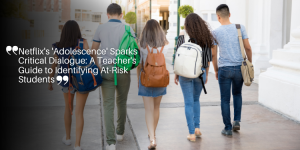Student Achievement Crisis: Understanding the Post-Pandemic Academic Decline and Solutions
The Alarming State of Post-Pandemic Education
It’s no secret that the COVID-19 pandemic has dramatically impacted education.
Recent data from the U.S. Department of Education indicates a significant decline in student test scores.
This alarming trend is raising concerns among parents, educators, and policymakers.
The achievement gap between the highest and lowest performing students is widening, particularly in reading and math.
Declining Test Scores
The latest findings reveal that fourth and eighth graders are especially affected, with their test scores seeing a notable drop compared to pre-pandemic levels.
Across the board, students are struggling to match the academic performance of their predecessors.
These declines are not just numbers on a page; they represent real setbacks in the educational development of a generation of children.
Widening Achievement Gaps
Compounding the problem is the expanding achievement gap.
The divide between the highest achievers and their struggling peers has grown, indicating that the pandemic’s disruptions have disproportionately affected those already at a disadvantage.
It’s a worrying trend that suggests the most vulnerable students continue to be left behind.
Reading Crises in Fourth and Eighth Grades
Fourth and eighth graders have shown significant drops in reading levels.
Literacy has long been a critical marker of academic success, and this decline is a clear sign that the pandemic has exacerbated an existing crisis.
Peggy Carr of the National Center for Education Statistics underscores that the joy of reading has diminished for many students, which is a troubling sign for their long-term educational engagement and success.
The challenges of declining test scores and widening achievement gaps call for immediate and effective interventions.
As we move forward, it is crucial to understand and address these educational setbacks to prevent long-term repercussions for this generation of students.

The Deepening Literacy Crisis
The pandemic has worsened the literacy crisis that was already present in schools across the United States.
Prior to COVID-19, many students were struggling with basic reading skills.
The shift to remote learning and the disruptions that followed only magnified these issues.
Pandemic Disruptions to Reading
During the pandemic, students lost not just instructional time, but also the joy of reading.
As Peggy Carr, commissioner of the National Center for Education Statistics noted, “Kids now don’t have the joy for reading they once did, and teachers have changed the way they teach writing in the digital age”.
The shift from in-person to virtual learning altered teaching methods, which impacted how well students could grasp reading concepts.
Decreasing Engagement and Enjoyment
One of the most alarming trends is the noticeable decrease in student engagement and enjoyment in reading.
Before the pandemic, many children found pleasure in reading stories and exploring new worlds through books.
Now, with more screen time and less interactive learning, enthusiasm for reading has significantly waned.
This decline is not just a concerning academic statistic; it’s a cultural and social issue that requires immediate attention.
Vulnerable Students at Greater Risk
Low-income students have been hit the hardest by this decline.
Adeola Whitney, CEO of Reading Partners, stated that it’s “alarming” to see so many students scoring at low reading levels Post-pandemic nose-dive. Students from impoverished backgrounds are particularly at risk of falling further behind.
Without solid reading skills, these students face heightened risks of remaining in poverty throughout their lives.
It’s clear that the reading crisis is deepening, and we need urgent solutions to combat this growing problem. As we move forward, addressing these educational setbacks will require innovative and focused strategies without delay.
The Challenge of Federal Funding Implementation
The COVID-19 pandemic exacerbated an already troubling educational landscape in the United States.
To address immediate challenges and support recovery, the federal government allocated a staggering $189.5 billion to schools through the Elementary and Secondary School Emergency Relief Fund (ESSER).
Despite this substantial investment, the anticipated recovery in student learning has not materialized as expected.
Learning Gaps Persist Despite Relief Funds
The aim was clear: accelerate student learning recovery and bridge the growing achievement gaps.
However, the results fell short of these goals.
Recent data reveals that student test scores in literacy and math have continued to decline post-pandemic, with an alarming widening of the achievement gap between high and low-performing students.
This has left many questioning the effectiveness of the fund’s allocation and usage.
According to Keri Rodrigues of the National Parents Union, the recent test scores are a “national disgrace” and suggest a concerning lack of tangible progress despite the unprecedented financial support schools received.
Urgent Need for Effective Solutions
With the temporary funds now expired, there’s mounting pressure on policymakers and educators to find more effective solutions.
Lindsay Dworkin from the education assessment company NWEA underscores the importance of focusing on evidence-based strategies given the expiration of federal emergency funding.
These strategies include:
- 📕 High-dosage tutoring
- 📕 Extended school days
- 📕 Summer programming
Such approaches have shown promise in small-scale implementations, yet scaling them nationwide presents significant logistical and financial challenges.
Questions on Fund Allocation and Usage
The lack of significant improvement in student achievement has sparked a call for greater scrutiny into how the relief funds were spent.
There are pressing questions about whether the resources were directed towards impactful programs or if they were mired in administrative overhead.
One emerging perspective, highlighted by Tequilla Brownie of TNTP, points to the need for a thorough review and adjustment of strategies.
Brownie emphasizes that the primary focus should be on identifying and implementing actionable solutions for the students who need them the most.
Addressing these funding inefficiencies and implementing targeted interventions is crucial to rectify the current academic decline.
One thing is certain: More effective and sustainable strategies are urgently needed to ensure that the next step doesn’t repeat the same mistakes and to set students on a path of successful recovery.
Chronic Absenteeism: A Persistent Problem
The pandemic has spotlighted a severe issue in the educational landscape: chronic absenteeism.
Between 2018 and 2023, there was a notable increase in the number of students missing significant portions of the school year.
This trend is deeply troubling because if students aren’t present in school, they can’t engage in the learning process, as emphasized by Peggy Carr, Commissioner of the National Center for Education Statistics.
Analyzing the Surge
Pre-pandemic data showed some issues with absenteeism, but the pandemic has exacerbated the situation.
Students who miss 10% or more of the school year are classified as chronically absent, and this has become more frequent, particularly among low-performing students.
According to the American Enterprise Institute, these students are more likely to fall behind academically, which compounds existing educational inequalities.
The Disparity Gap
Low-performing students, especially those from low-income backgrounds, are disproportionately affected by chronic absenteeism.
These students often face barriers to regular attendance such as lack of access to transportation, unstable housing situations, and health-related issues.
Unfortunately, the rate of absenteeism has not returned to pre-pandemic levels despite some improvements.
Consequences and Implications
The impacts of chronic absenteeism are far-reaching.
Absence from the classroom leads to missed learning opportunities, which can result in lower academic performance and diminished long-term educational and career prospects.
It also widens the achievement gap, making it harder for underprivileged students to catch up with their peers.
Addressing chronic absenteeism requires a concerted effort from educators, parents, and policymakers.
It is crucial to identify the underlying causes and implement strategies such as:
| Strategy | Description |
|---|---|
| Supportive Services | Address health and welfare concerns through dedicated support services. |
| Flexible Learning Options | Provide adaptable learning paths for students dealing with personal challenges. |
| Family and Community Engagement | Involve families and communities to emphasize the importance of regular school attendance. |
Without dedicated action, the recovery of our educational system remains incomplete.
As the focus shifts towards evidence-based solutions and the urgency for effective interventions grows, addressing chronic absenteeism is paramount for educational equity and student success.
Proposed Solutions and Path Forward
Evidence-Based Strategies
To address the post-pandemic education crisis effectively, it’s essential to implement evidence-based strategies.
High-dosage tutoring stands out as a powerful solution.
This approach involves intense and frequent tutoring sessions that provide personalized attention to students who need it the most.
Research has shown that targeted tutoring can significantly improve student performance, especially for those who have fallen behind during the pandemic.
Expanding Instructional Time
Another critical strategy is expanding instructional time.
By extending school days and incorporating summer programming, we can create more opportunities for learning and help students catch up.
Longer school days allow for additional instructional periods, which can be dedicated to reinforcing key concepts and skills.
Summer programs can prevent the “summer slide” and ensure continuous learning, which is particularly beneficial for struggling students.
Focused Interventions
It’s crucial to directly support the students who are most affected by educational disruptions.
Focused interventions should target low-performing and disadvantaged students to bridge the achievement gap.
These interventions can include specialized reading programs, math support, and social-emotional learning activities.
By providing tailored support, we can address the specific needs of each student and promote their overall success.
Together, these strategies can create a comprehensive approach to overcoming the academic decline.
As we move forward, it’s essential to evaluate the effectiveness of these interventions and make necessary adjustments to ensure that all students have the opportunity to thrive in their educational journeys.







